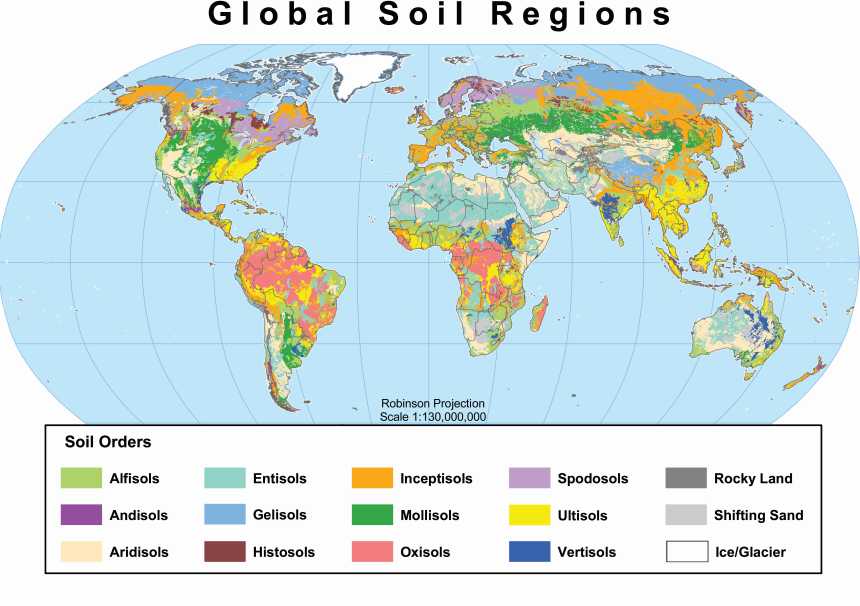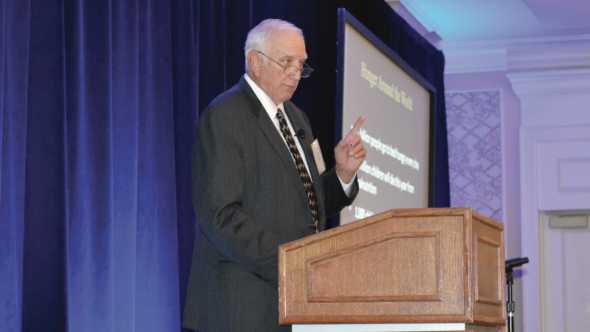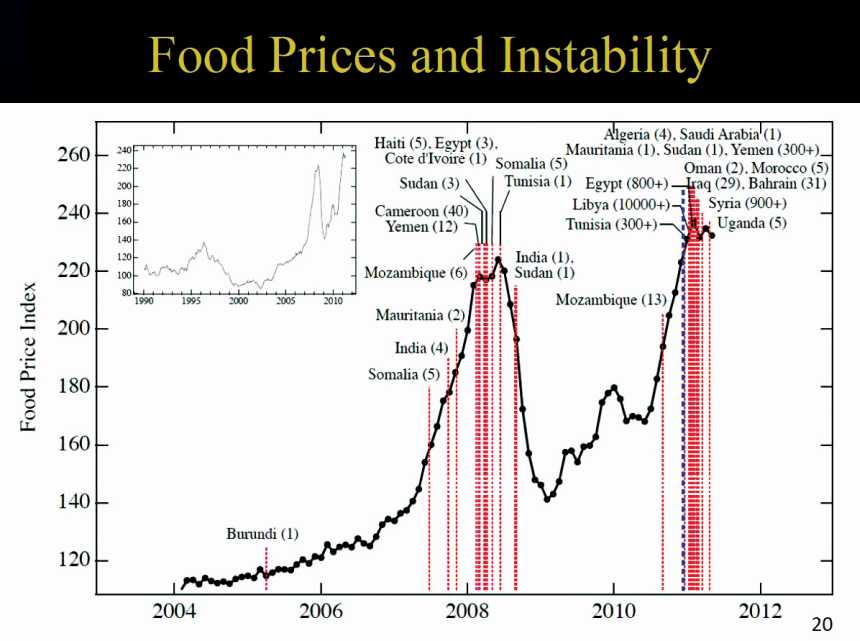Can American Agriculture Save The World?
In agricultural circles, it is common to preach to the choir that —“We feed and clothe the world.” Then the statistics follow about the productivity of the American farmer now feeding 155 people. It makes us feel good and reminds those of us in the business of growing food that agriculture carries the world on its shoulders.
But, what do those talking points really mean? If you are in the business, you’ve heard the stats so often that just maybe they don’t mean anything anymore other than something akin to a cheer.
One of the figures rattled off often is that by 2050 our global population will be at or above nine billion people. We are adding about 80 million people a year. That means we are adding the population of Germany to the planet every year.
We will need to increase food production 70% by 2050 to meet the demands of the growing population. We have 35 growing seasons to get there — or about the career of grower here in America. That’s not that long, so growers, science, and industry must mobilize now to increase the productivity of agriculture across the globe.
As a Florida grower worried about managing the day-to-day challenges of remaining viable in the face of HLB, foreign competition, and market crashes due to overproduction of a particular crop, what happens in 2050 probably fades in importance in the heat of keeping the wheels on the tractor and farming for another day. But, the challenge of feeding nine billion should matter to you and every one of the rest of us. That’s because it will largely fall on the shoulders of American farmers to meet this global challenge.

Image courtesy of USDA
Four Soils
Dr. Paul Genho knows land and the importance of soils in growing food. He recently retired from AgReserves Inc. where he was in charge of land acquisitions. He also served as general manager over Deseret Ranches for 17 years.
Genho recently outlined the importance of America in feeding the world during a speech at the Lay Of The Land Conference hosted by Dean Saunders Real Estate. He showed attendees the USDA’s soils map of the globe and pointed out four soil types.
The Mollisols are the most productive soils in the world and spread across much of the midwestern U.S. They developed on the great prairie and were enriched by thousands of years of buffalo grazing. The Alfisols crossing the northeastern U.S. are next most productive and developed under hardwood forests. The third most productive soil type is the Ultisols, which formed under pine wood forests and are found in North Florida and the Southeast. The fourth most productive soil is the Oxisols, which formed under the tropical rainforests in South America.
“Those four soil types account for 90% of the food production in the world,” Genho said. “Now, look at Africa, India, and China. None of these countries have an abundance of these soils or the capacity to feed themselves.”
Genho added those three countries are the areas where the population is growing the fastest and already account for 3.6 billion of the world’s current 7.2 billion people. So, it will come down to the Americas, particularly the U.S., to help feed these burgeoning regions.

Paul Genho
Photo by Frank Giles
Genho emphasized how blessed our country is and why it is the bread basket of the world. While America only makes up 6.7% of the land area and only 4.2% of the global population, the country has 21% of the world’s most productive Mollisols. And, it has 10% of the Alfisols on the planet.
“We also are blessed with having 21% of the [land area] where it rains [regularly],” he said. “On the soils map, you see a lot of Mollisols in the steps of South Asia and the Ukraine, but they have little groundwater and infrequent rain.”
The best soils in the world and good water are augmented by a cheap highway to move all that is grown here in the Mississippi River. In Brazil, which has huge land area of Oxisols does not have this transportation infrastructure. Genho said he had visited the Mato Grosso in Brazil to consider a land purchase that required a haul of several hundred miles on a clay road, which couldn’t even be driven on when it rained.
A second issue adding to the food production challenge is the rise of the middle class across the globe. By 2030, the middle class is estimated to grow to 4.3 billion up from the 1.3 billion today. Those people will demand a higher quality diet that includes meat, milk, nuts, and fresh fruits and vegetables.
“The United Nations Food and Agriculture Organization estimates we are going to need to produce 70% more food than today by 2050,” Genho said. “Where is this food going to be produced? On the shifting sands of Lower Africa? It is going to be produced in North and South America, and in particular the U.S., because we are the only people with the capacity to greatly increase food production and address this driving issue.”
♦ Click to the next page to see why it is so important. ♦
Why Is It Important?
Rising to the 2050 challenge has obvious humanitarian implications. On the planet, one billion people go to bed every night hungry — roughly one out of every seven. More than six million children die annually from starvation.
Genho pointed out another reason America is a blessed country by noting the amount of our income spent on food, which is only 6.4%. By contrast, many countries in the Middle East spend 40% or more of their income on food. In Sub-Saharan Africa, people spend 80% of their income on food.

Chart courtesy of Paul Genho
“Hunger is a major issue worldwide for humanitarian reasons, but also politically,” Genho said. “What happens in a corn field in Iowa directly impacts our global policy in Afghanistan. ISIS is a great deal empowered by the lack of food [in the Middle East].
Much of the 2050 Challenge discussion has revolved around grain production, but Jack Payne, executive vice president of UF/IFAS, says Florida growers will have a place in this global action.
“Florida growers will be important in this effort, and I plan to encourage them to join us in this challenge,” Payne says. “For some time, the world has looked to commodity states like Iowa with its production of corn and soybeans as essential to this effort. Florida is a specialty crop state and not a commodity state. However, the discussion is now changing from carbohydrate-enriched diets to fruits and vegetables, which Florida excels. Our growers will be playing on the world stage with our specialty crops.”
The Path Forward
So, how will the challenge of feeding nine billion people by 2050 be met? It will be largely driven by research, breeding new and more productive varieties, and the adoption of new technologies.
In his speech, Genho laid out solutions to encourage high food production capacity. He said first agriculture needs to operate in a free-market system where growers can compete on a level playing field. He said government regulation will and is currently stifling productivity.
“In Argentina, the government is taxing growers at such a high rate that many are quitting farming,” he said. “Argentina is the second bread basket of the world and they are killing the golden goose with foolish government policy.”
He argued that U.S. government regulations should be aimed at unleashing agricultural productivity rather than curbing it. Environmental, food safety, and labor regulations all are adding to U.S. growers’ costs and will impede their ability to produce and grow their farms.
Genho also called for a revival in agriculture in North and South America driven by research. Institutions like UF/IFAS will play a key role in stepping up to the 2050 Challenge.
“We have to act now because of the amount of time that is involved in research for new varieties of food plants, plus regulatory concerns, etc.,” Payne says. “Time is of the essence. It is more than just developing higher yields and new varieties. At the same time, we have to think about protecting ecosystem services, like water, that make agriculture possible. There also is food safety and food security concerns, as well as distribution.
“Institutions such as the University of Florida are essential to this effort. Because UF is a land grant university, these public research institutions specifically have the scientists who are trained to find solutions in all areas of agriculture, food safety, food security, natural resources, engineering, and human health.”
Payne adds we can meet the 2050 Challenge, if state and federal governments fully fund the research needed to feed the world.
“Current budget caps and not growing research budgets will make it very difficult for public university researchers to find the answers,” he says. “We need to have our elected officials understand and recognize that these institutions are the research and innovation arm of this challenge.”
♦ Click to the next page to find out what the Challenge 2050 Project is all about. ♦
Project Takes Aim At Feeding The World

Photo by Mary Hartney
A key to feeding nine billion people by 2050 will be the recruitment of talented young people in the field of agriculture and related industries. The University of Florida is doing its part with an undergraduate program called the Challenge 2050 Project.
The project places students with industry professionals and policymakers to discuss and seek solutions to problems that will arise as agricultural productivity must increase. The dynamic four-course program brings together students from 10 of the school’s 11 undergraduate colleges and represents 29 different majors.
To learn more about the project, visit Challenge2050.ifas.ufl.edu.










